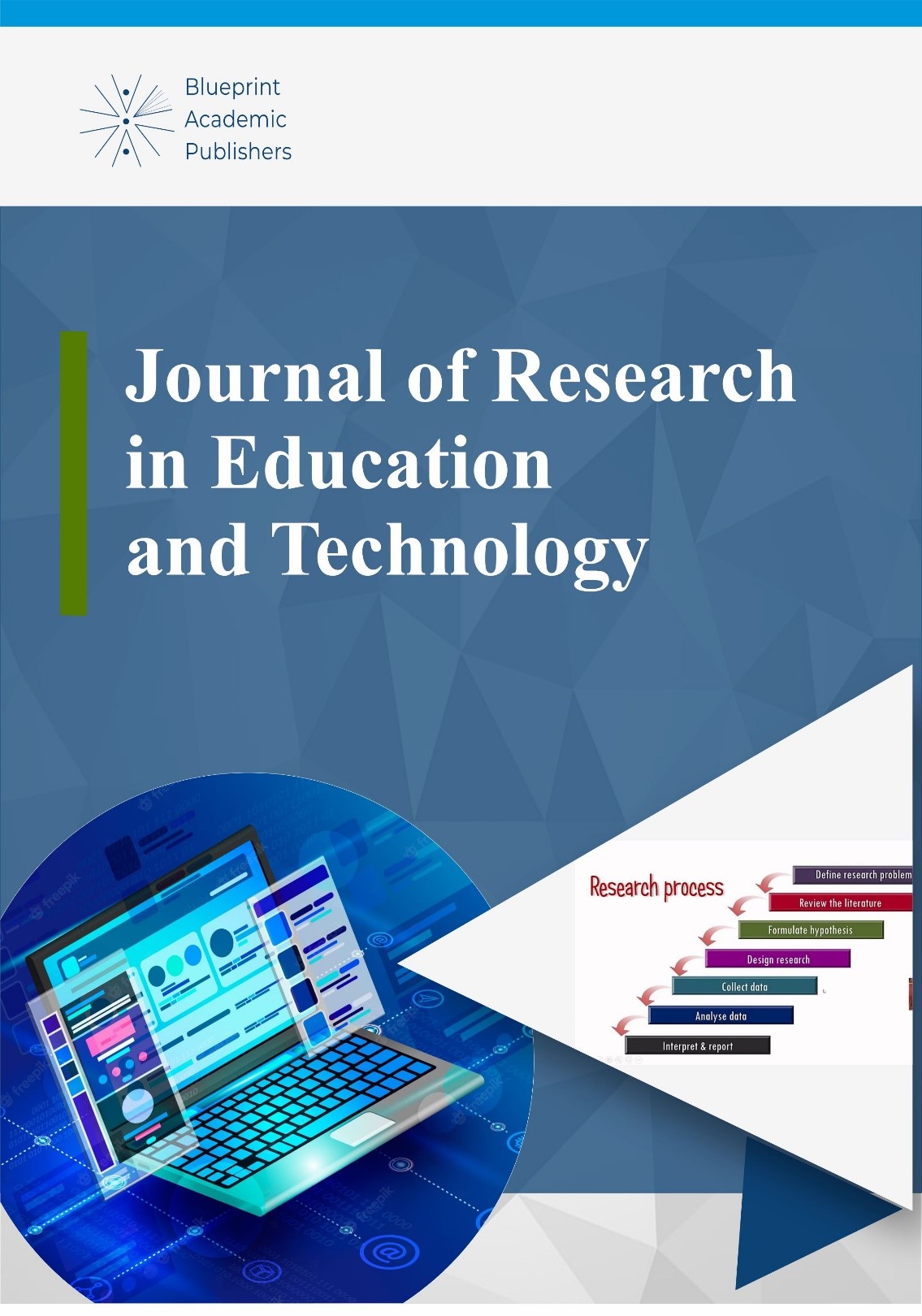Influence of Increased Trainees’ Enrolment on Collaboration Between Industries and TVET Institutions in Public TVET Institutions in Uasin Gishu County, Kenya
Main Article Content
Keywords
TVET institutions, industry collaboration, trainees’ enrolment, industrial attachment, Uasin Gishu County, Kenya
Abstract
Technical and Vocational Education and Training (TVET) institutions play a central role in producing a skilled workforce for Kenya’s growing economy. Recent government initiatives to expand access have led to increased enrolments in public TVET institutions, raising concerns about how this growth affects collaboration with industries that are vital for practical skill development. This study examined the influence of increased trainees’ enrolment on collaboration between industries and public TVET institutions in Uasin Gishu County, Kenya. A descriptive research design guided the study, targeting 17,800 trainees, 750 trainers, and 4 principals across four institutions. Using stratified and simple random sampling, the study engaged 1,780 trainees, 75 trainers, and all four principals. Data were collected through questionnaires and interviews, then analyzed using both descriptive statistics and thematic analysis. Findings revealed that industrial attachment remains the most common form of collaboration, followed by workshops, seminars, and limited research partnerships. However, the effectiveness of these collaborations was rated low, with 65.9% of trainees and 67.2% of trainers indicating that current industry linkages were not effective. The main challenges included resource constraints, technological gaps, limited time for industry engagement, and inconsistent support for securing attachments. Principals further highlighted systemic barriers such as understaffing, inadequate funding, and logistical difficulties that undermine institutional capacity to sustain quality training amid rising enrolment. The study concludes that while industry attachments dominate collaboration efforts, they are insufficient to address the growing skill demands under increased enrolment. Strengthening partnerships through dual training models, co-designed curricula, shared training facilities, and structured mentorship is necessary to enhance training quality. The study recommends greater government support in aligning enrolments with institutional capacity, expanded industry participation in training, and investment in modern facilities to ensure TVET graduates are adequately prepared for the labour market.
References
Ayieko, V. O., Okemwa, P., & Muthoka, K. (2023). Enhancing TVET Institutions through Robust Partnerships and Industrial Collaborations in Kakamega County, Kenya. http://41.89.164.27/handle/123456789/2083
Barasa, P. L. (2021). Digitalization in teaching and education in Kenya: Digitalization, the future of work and the teaching profession project. International Labour Organization. http://erepository.au.ac.ke/bitstream/handle/123456789/1312/wcms_783665.pdf?sequence=1
Euler, D. (2017). Germany’s dual vocational training system: A model for other countries? Bertelsmann Stiftung. https://www.bertelsmann-stiftung.de/fileadmin/files/BSt/Publikationen/GrauePublikationen/GP_Germanys_dual_vocational_training_system.pdf
International Labour Organization (ILO). (2023). Building pathways to sustainable growth: Strengthening TVET and productive sector linkages in Africa (synthesis report). https://www.ilo.org/wcmsp5/groups/public/---africa/---ro-abidjan/---sro-cairo/documents/publication/wcms_881406.pdf
Khatete, I., & Chepkoech, S. (2018). Technical, Vocational Education and Training Institutions’ Capacities Impact on Manpower Development for The Realization of Economic Pillar of the Kenya Vision 2030. https://doi.org/10.1177/14779714221145863
Kigwilu, P. C., Akala, W. J., & Wambua, J. M. (2016). Challenges facing the effective implementation of Artisan and Craft courses in Catholic sponsored community colleges in Nairobi, Kenya. http://www.iosrjournals.org/
Kiprono, J., Chepkangor, D., Agengo, F., Kere, P., Keino, S., & Yego, F. (2022). Assessment of Strategic Gender Needs of Technical and Vocational Training Institutes in Uasin Gishu County, Kenya: Review of Gender Policies and Frameworks.
Lux, K. M. (2023). Vocational tertiary education of young adults in Kenya: model development. Pepperdine University.
Magagula, M. M. (2024). The implications of the Fourth Industrial Revolution on TVET programme delivery: Evidence from South Africa. Technological Forecasting and Social Change. https://www.sciencedirect.com/science/article/pii/S2590291124000937
Mbonambi, M. G. (2024). The Management of the First-year Student Experience Programmes at the Selected Higher Education Institution: A Case of Business and Information Management Undergraduates (Doctoral dissertation, Durban University of Technology). https://openscholar.dut.ac.za/server/api/core/bitstreams/c237ea00-2515-4162-847d-aa2ddc41ae33/content
Muchira, J. M., Kiroro, F., Mutisya, M., Ochieng, V. O., & Ngware, M. W. (2023). Assessing technical vocational education and training institutions’ curriculum in Kenya: what strategies can position the youth for employment?. Journal of Adult and Continuing Education, 29(2), 563-582. https://doi.org/10.1177/14779714221145863
Mugenda, O. M., & Mugenda, A. G. (2003). Research methods: Quantitative & qualitative apporaches (Vol. 2, No. 2). Nairobi: Acts press.
Musyimi, C. (2021). Developing skills to unlock Kenya’s industrial growth: Influence of modern teaching and learning equipment in TVET. Journal of Learning for Development, 8(1). https://oasis.col.org/items/0987ed14-5a4b-4ab6-b6f3-46a74a0d6c3c
Mutembei, L. N., Kibaara, T., & Gichohi, P. M. (2024). Influence of industrial engagement on development of employability skills of TVET graduates in Meru County, Kenya. International Journal of Professional Practice, 12(3), 58–71. https://ijpp.kemu.ac.ke/index.php/ijpp/article/view/455
Muthoka, D., Wangila, E., & Ongeti, K. O. (2025). Effect of industrial induction process on acquisition of vocational skills during industrial attachment among TVET trainees in Kakamega County, Kenya. African Journal of Empirical Research, 6(3), 639–653. https://ajernet.net/ojs/index.php/ajernet/article/view/1178
Ndlovu, T., & Van Wyk, M. (2023). Public–private partnerships (PPPs) involvement in advancing TVET: Evidence from Cameroon. International Journal of Social Science and Humanities Innovation. https://valleyinternational.net/index.php/theijsshi/article/download/4910/2728/14022
Ngugi, M., & Muthima, P. (2017). Female participation in technical, vocational education and training institutions (TVET) subsector. The Kenyan experience. Public Policy and Administration Research, 7(4), 9-23. https://ir-library.ku.ac.ke/server/api/core/bitstreams/b0e29f1b-d6d2-46db-9f47-7b65ed580668/content
Njenga, M. (2023). TVET teacher mentoring in Kenya: Valued but poorly implemented. International Journal of Mentoring and Coaching in Education, 12(2), 113-127. https://doi.org/10.1108/IJMCE-04-2022-0028
Njengele, T. (2024). Partnerships between TVET colleges and industry: Building practices for enhanced relevance. Journal of Vocational, Adult and Continuing Education and Training, 7(2). https://journals.co.za/doi/10.14426/jovacet.v7i2.418
Okemwa, K., Ferej, A., & Wanami, S. (2022). TVET institutions and industry collaborative practices on electronics laboratory training for skill acquisition among technician trainees in Kenya. Journal of Scientific Research and Reports, 28(9). https://journaljsrr.com/index.php/JSRR/article/view/1388
Relly, S. J. (2022). Apprenticeship, employer engagement and vocational formation. British Journal of Educational Studies. https://www.tandfonline.com/doi/full/10.1080/13639080.2021.1983524
Shi, Y., et al. (2022). Young people’s participation experiences of technical and vocational education and training interventions in low- and middle-income countries: A systematic review of qualitative evidence. Empirical Research in Vocational Education and Training, 14, Article 36. https://ervet-journal.springeropen.com/articles/10.1186/s40461-022-00136-4
Taber, K. S. (2018). The use of Cronbach’s alpha when developing and reporting research instruments in science education. Research in science education, 48(6), 1273-1296. https://doi.org/10.1007/s11165-016-9602-2
Waugh, J. (2024). VET partnerships powering a dynamic workforce. NCVER Conference Paper. https://files.eric.ed.gov/fulltext/ED655796.pdf

